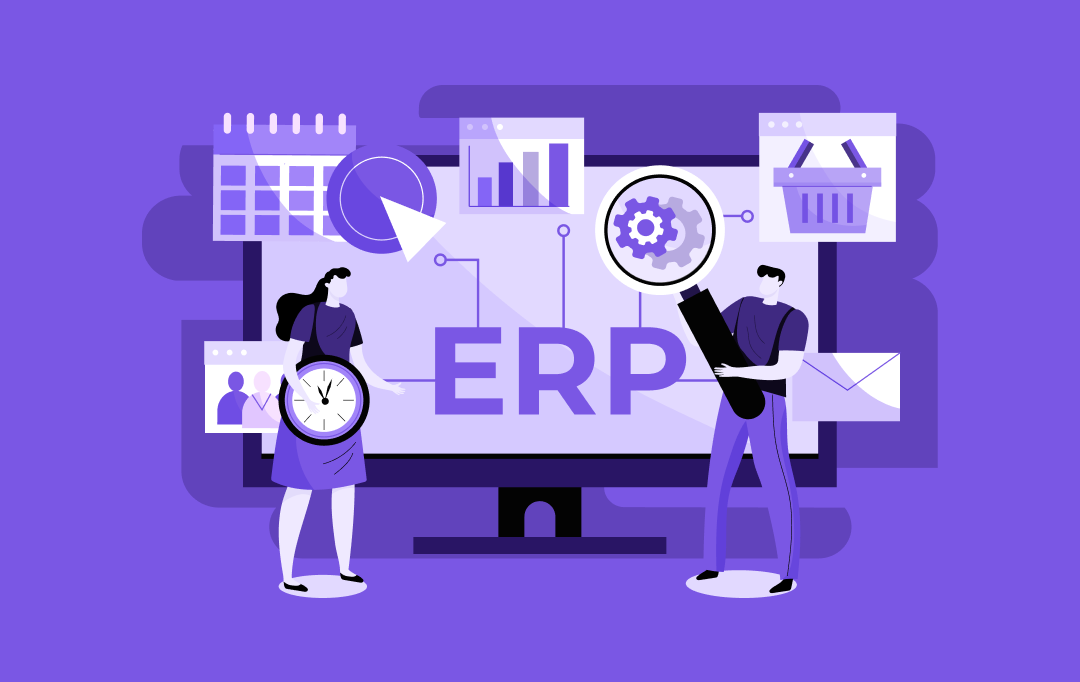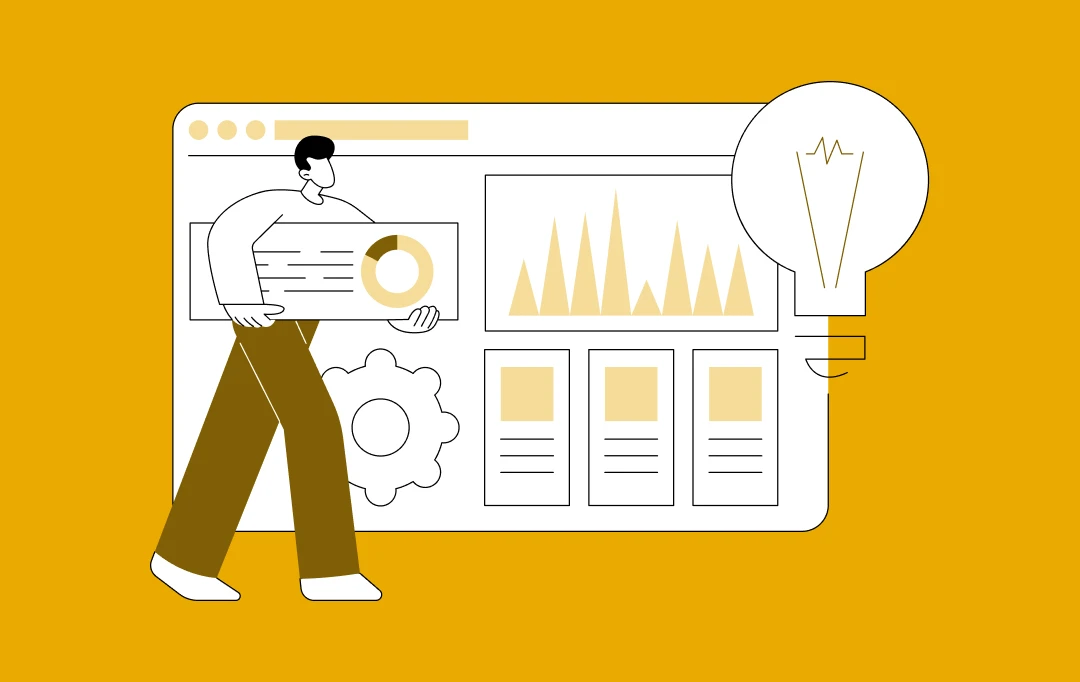- Factors Affecting the Energy Trading Software Development Costs
- Software Complexity and Features
- Technology Stack
- Level of Customization
- Regulatory Compliance
- Integration Requirements
- Location of the Hired Software Development Team
- UI/UX Design
- Scalability Requirements
- Security Features
- Post-Launch Support and Maintenance
- Features to Develop a Robust Energy Trading Software
- How to Develop an Energy Trading Software?
- Define Objectives and Requirements
- Conduct Market Research
- Choose the Right Technology Stack
- Design the UI/UX
- Develop the Software
- Integrate Third-Party Services
- Testing and Quality Assurance
- Deploy the Software
- Training and Support
- Ongoing Maintenance and Updates
- Challenges Associated with Robust Energy Trading Software Development
- Regulatory Compliance
- Data Security and Privacy
- Integration with Legacy Systems
- Real-Time Data Handling
- User Adoption
- Scalability
- FAQs
The energy sector is evolving rapidly, and with the rise in renewable energy sources and the decentralization of power grids, energy trading software has become more vital than ever. As we progress through the 21st century and the age of digitalization, these platforms are becoming indispensable tools for managing the complex dynamics of buying, selling, and distributing energy.
This software allows firms to respond quickly to market shifts, manage risks effectively, and streamline their operations, which is crucial as the industry moves toward sustainable energy practices. For businesses, utilizing these software which are backed by advanced analytical tools and real-time data processing can also help in greatly improving the decision-making and strategic market positioning.
However, investing in such advanced technology requires a thorough understanding of the associated energy trading software development costs. From coding and system integration to maintenance and updates, the financial commitment can be substantial for the businesses. Thus, recognizing these costs upfront is crucial for streamlining budgeting and planning while ensuring a smooth implementation process and the long-term success of the software.
To give you a rough idea of the budget involved, the overall custom energy trading software cost can vary from $40,000 to $400,000+. There are several factors that can impact the development costs including the UI/UX design, location of the hired development team, overall software complexity, features to be integrated etc.
Our blog aims to guide you through the financial aspects of adopting energy trading software. By understanding the factors affecting energy trading software cost, your firm can make informed decisions that align with your financial strategies and operational goals.
Whether you are a business looking to upgrade your existing systems or implement a new solution, we will provide the insights you need to navigate these investments wisely.
[Also Read: A Comprehensive Guide to Estimating Custom Software Development Costs]
Let us now move ahead and understand the factors that affect the energy trading platform development pricing in detail below.
Factors Affecting the Energy Trading Software Development Costs
The cost to build an energy trading software can vary significantly based on several key factors. It’s important for businesses to consider these variables carefully to ensure they make informed budgeting decisions. Let us look at the factors that affect the custom energy trading software costs in detail below:

Software Complexity and Features
The complexity of the software and the range of features it includes are primary factors that affect the overall cost to build an energy trading software. More sophisticated features like real-time data analysis, automated trading capabilities, and advanced risk management tools require additional development time and expertise, which can increase the overall cost.
Technology Stack
The choice of the technology stack, which includes the programming languages, databases, and other tools used for development, also affects the energy trading software development costs. It is vital to understand that integrating cutting-edge technologies may offer enhanced capabilities but can be more expensive and require developers with specialized skills.

Level of Customization
The cost of tailor-made energy trading software rises with the level of customization because creating specialized features that match your unique business processes and regulatory requirements involves additional work.
This extra work can include writing new code, testing to ensure everything works as expected, and spending more time on project management. Each of these steps requires skilled professionals, which increases the overall effort and time needed, thereby raising the costs.
Regulatory Compliance
Energy trading platforms must comply with various local and international regulations. Incorporating compliance-related features and security measures to protect data and transactions can significantly add to the development costs.
[Also Read: IT Compliance Regulations for Industries in the US – Ensuring Your Business is IT Compliant]
Integration Requirements
The ability to integrate the software with existing systems such as ERP software, CRM solution, or other operational tools affects the complexity and the overall energy trading app cost estimation. Seamless integration requires extensive planning and testing, which can extend the development timeline and the overall budget.
Location of the Hired Software Development Team
The location of the hired software development team also affects the overall budget for energy trading software development. For instance, the hourly rate of development in areas like the UK or the US is high as compared to regions like Asia. For businesses looking to leverage the highest levels of professionalism, expertise, and adherence to regulatory requirements at an optimized cost, it is preferable to outsource software development to a dedicated firm in regions like India.
| Region | Hourly Rates of Development |
|---|---|
| UAE | $60-$65 |
| US | $95-$100 |
| Western Europe | $80-$90 |
| Australia | $70-$90 |
| Eastern Europe | $50-$55 |
| Asia | $25-$40 |
UI/UX Design
A well-designed user interface and user experience are crucial for ensuring the software is accessible and easy to use. Investing in high-quality UI/UX design can increase upfront energy trading software development costs but significantly enhance user satisfaction and adoption rates.
Scalability Requirements
The need for scalability can affect the initial and ongoing cost to build an energy trading software. Planning for future expansion like adding more users, handling larger data volumes or more requires building a robust system that can grow with the business without needing complete redevelopment.
Security Features
As sensitive data is involved in energy trading, investing in advanced security features is essential for businesses. Implementing measures such as encryption, multi-factor authentication, and continuous security monitoring can increase the energy trading software development costs but are critical for protecting the system against cyber threats.
Post-Launch Support and Maintenance
Ongoing support and maintenance are necessary to keep the software operational and up-to-date. These costs are added to the overall budget for energy trading software development and includes the likes of expenses related to handling updates, bug fixes, and possibly scaling solutions as the user base grows or market demands change.
Features to Develop a Robust Energy Trading Software
Developing energy trading software involves incorporating a variety of features that address the specific needs of the energy market while enhancing functionality and user experience. Let us look at major energy trading software features in more detail below:

Real-Time Data Processing and Analytics
This feature helps in gathering, visualizing, and analyzing market data as it happens, allowing traders to make quick and well-informed decisions.
[Also Read: AI Analytics for Businesses – Benefits, Use Cases, and Real Examples]
Automated Trading Algorithms
Automated trading helps improve operational efficiency by executing trades at the best possible times without constant human supervision based on set rules.
Risk Management Tools
Essential for identifying and managing potential financial, operational, and market risks, these tools help firms reduce losses and enhance profitability.
Compliance Management
With the complex regulations in the energy sector, compliance management features to ensure all trading activities meet legal requirements, helping avoid any regulatory penalties.
Customizable Dashboards
These dashboards can be tailored to show important metrics, making it easier for users to track their trading activities and access necessary insights from a single place.
Multi-Currency and Multi-Language Support
The platform should support multiple currencies and languages, which is crucial for firms operating internationally. This enhances overall accessibility and market reach across different regions. It is vital to grasp that these advanced features also impact the overall energy trading app cost estimation but are necessary for a robust product development.
Reporting and Auditing
Features for detailed reporting and auditing are critical for maintaining transparency and providing in-depth insights into trading activities. They aid in effective decision-making and compliance.
Integration Capabilities
Energy trading software should integrate smoothly with existing systems like ERP or CRM. This enhances the overall data consistency and operational efficiency within an organization.
Security Features
Implementing strong security measures such as encryption, two-factor authentication, and continuous monitoring is essential to safeguard sensitive data and secure transactions.
Mobile Accessibility
Mobile access allows the stakeholders to use the software to operate the platform, execute trades, and monitor the market from anywhere, increasing operational flexibility and response times.
Now that you have looked into the factors that affect the overall energy trading software development costs and the essential energy trading software features that you need to integrate, let us now move ahead and look at the energy trading software development process in detail below.
How to Develop an Energy Trading Software?
Developing energy trading software requires careful planning and execution to meet the complex demands of the energy market. Here’s a step-by-step guide to creating an effective energy trading platform:

Define Objectives and Requirements
Start by identifying the specific needs of your business. What problems are you aiming to solve with the software? Who will be using the software? Understanding these requirements early on will guide the entire energy trading software development process, ensuring the final product aligns with your business goals.
Conduct Market Research
Research the current market to understand what features are available, what your competitors are offering, and what regulations you need to comply with. This information will help you define what unique offerings your software should have in order to stand out from the rest.
Choose the Right Technology Stack
Selecting the appropriate technologies is critical for building robust software. Decide on programming languages, databases, and frameworks that will best support the functionality and scalability of your software. It is vital to choose the right and advanced technologies that you can integrate in your software so as to make it stand out from the competitors. Nonetheless, do keep in mind that it will also impact the overall cost to build an energy trading software.
Design the UI/UX
Design a user-friendly interface that caters to the needs of the end-users. The interface should be intuitive, easy to navigate, and visually appealing. Good design can significantly enhance user satisfaction and adoption rates but it also adds to the overall energy trading software cost breakdown.
Develop the Software
Begin coding and developing the software based on the defined requirements and designs. During this phase, ensure that the development team adheres to best practices and coding standards to maintain high quality and security.
Integrate Third-Party Services
Depending on the needs, your software might require integration with other systems such as CRM, ERP, etc. Ensure these integrations are seamless and do not disrupt the core functionalities of your platform.
Testing and Quality Assurance
Conduct thorough testing to ensure the software works as intended and is free from bugs. This includes performance testing, security testing, and user acceptance testing (UAT) with real users to gather feedback and make necessary adjustments.
Deploy the Software
Once the software passes all the required testing procedures, deploy it in your desired environment. Plan the deployment to minimize disruptions to existing operations and ensure a smooth transition.
Training and Support
Provide training to all end-users to help them make the most of the new software. Additionally, set up a support system to address any issues users may encounter.
Ongoing Maintenance and Updates
After deployment, continuously monitor the software’s performance and gather user feedback. Regular updates and maintenance will be necessary to add new features, fix bugs, and adjust to new requirements or market conditions.
Challenges Associated with Robust Energy Trading Software Development
In addition to the overall energy trading app cost estimation, developing energy trading software also presents a set of challenges that require careful consideration from your end. Here are some common challenges faced during the development process:
Regulatory Compliance
Navigating the complex and ever-changing regulations in the energy sector is one of the major challenges. Ensuring the software complies with all local and international laws demands constant updates and regular checks.
[Also Read: Top 11 Legal Issues to Consider to Protect Your App in 2024]
Data Security and Privacy
Protecting sensitive trading data against cyber threats is crucial. Developing robust security measures that defend against increasingly sophisticated cyber attacks can be complex and costly.
Integration with Legacy Systems
Many energy-oriented businesses use legacy systems that need to be integrated with new trading platforms. Ensuring compatibility without disrupting existing operations can be technically challenging.
Real-Time Data Handling
The need for real-time data processing and analysis requires high-performance software solutions that can handle large volumes of data efficiently and without delays.
User Adoption
Encouraging the stakeholders to adopt new software involves challenges related to change management and training. The software must be user-friendly and offer clear benefits to encourage widespread adoption.
Scalability
As businesses grow, their software needs to handle an increasing number of transactions and data without performance degradation, requiring scalable architecture from the start.
The question arises: how can a business like yours navigate these challenges? Well, the simple answer would be partnering with a dedicated custom software development services firm like Appinventiv. Our experts are equipped to handle these challenges and deliver high-quality energy trading software solutions tailored to your specific needs.
Our team stays updated with the latest regulations to ensure that your software complies with all legal requirements, reducing the risk of penalties. In addition to this, we also implement state-of-the-art security measures, including encryption, multi-factor authentication, and continuous monitoring, to protect your data from cyber threats.
By choosing an energy software development company like Appinventiv, you partner with a team committed to delivering excellence and equipped with the expertise and innovative technology necessary to enhance your operational capabilities.
Let us help you navigate the complexities of the energy trading market, give you a detailed estimate of the custom energy trading software costs while paving the way for you to develop a software that is robust, secure, and aligned with your strategic goals.
FAQs
Q. How much does it cost to develop an energy trading software?
A. The overall energy trading software development cost can vary widely, typically ranging from $40,000 to $300,000. There are multiple factors that influence the overall cost analysis of energy trading software such as the complexity of the features, the chosen technology stack, the level of customization, regulatory compliance needs, the location of the development team, etc.
Q. How long does it take to develop an energy trading software?
A. The development time for energy trading software can range from a few months to over a year, depending on the complexity and scope of the project. Simple platforms might take around 5 to 6 months, while more complex systems with extensive features can take 12-18 months or more.
A dedicated software development team can help you offer an exact timeline as well as the cost to build an energy trading software, based on your custom business requirements. Connect with an expert.
Q. How can you ensure the scalability of energy trading software for future growth?
A. Ensuring the scalability of energy trading software involves selecting a flexible technology stack, designing a modular architecture, and opting for cloud-based solutions that can easily adapt to increased demands. This approach allows the software to handle more users, more transactions, and larger data volumes as your business grows without compromising performance.
Q. What are the benefits of investing in energy trading software for businesses?
A. Here are some of the essential energy trading software development benefits for businesses:
Enhanced Decision Making: By providing real-time data and analytical tools, the software enables businesses to make faster and more accurate decisions.
Increased Efficiency: Automation of trading and data processing reduces manual tasks and errors, leading to more efficient operations.
Improved Profitability: Effective risk management and strategic trading, facilitated by sophisticated software tools, can lead to better margins and profitability.
Regulatory Compliance: The software helps firms stay compliant with evolving regulations, avoiding fines and legal issues.


- In just 2 mins you will get a response
- Your idea is 100% protected by our Non Disclosure Agreement.

Custom Development or White Label Solutions: Which is Right for Your Business?
Key takeaways: 77% of companies are prioritizing digital transformation; the right tech approach is crucial for staying competitive. Custom development offers tailored solutions for unique needs, flexibility, and long-term scalability. Whereas, white-label solutions provide quick market entry, cost-efficiency, and easy customization for standard needs. Appinventiv’s expertise helps you navigate custom development vs white-label to choose…

ERP Integration in Australia - Why It Is Essential and How to Do It Right
Key takeaways: ERP integration enables operational efficiency, reduced costs, and enhanced decision-making. Healthcare, finance, manufacturing, retail, and all the other sectors are benefiting from ERP integrations in Australia. While ERP integration can be costly, ranging from AUD 45,000 - AUD 450,000, it leads to significant long-term savings and scalability. Compliance with Australian regulations is critical,…

Predictive Analytics Software Development - Features, Benefits, Use Cases, Process, and Cost
Key Takeaways Predictive analytics helps businesses shift from “what has happened” to "what will happen," enabling proactive strategies rather than reactive ones. Real-time analytics and AI integration are driving the growth of predictive analytics, making it more accurate, accessible, and critical for business success. Custom predictive analytics solutions can enhance customer satisfaction, reduce costs, and…

















